
The Enchanting Highlands of Tilcara
Discover Tilcara, a UNESCO World Heritage site in Argentina's Quebrada de Humahuaca, where rich cultural traditions and breathtaking landscapes await.
Tilcara, nestled in the heart of Argentina's Quebrada de Humahuaca, is a charming town that captivates with its rich cultural heritage and stunning landscapes. The town is a UNESCO World Heritage site, known for its vibrant festivals, traditional music, and colorful markets. The indigenous heritage here is palpable, with local artisans showcasing their crafts and traditional recipes bringing the flavors of the Andes to life. A visit to the Pucará de Tilcara, an ancient pre-Inca fortress, offers a fascinating glimpse into the region's history. The site's strategic location provides panoramic views of the surrounding valley, making it a photographer's paradise. Nearby, the Garganta del Diablo (Devil's Throat) waterfall offers a refreshing escape into nature, with hiking trails that lead through breathtaking scenery. Tilcara's mild climate makes it a year-round destination, but it's particularly lively during the Carnival in February, when the town comes alive with music, dance, and traditional ceremonies. Whether you're exploring the vibrant streets, enjoying the local cuisine, or simply soaking in the natural beauty, Tilcara promises an unforgettable experience.
Local tips in Tilcara
- Visit the Pucará de Tilcara early in the morning to avoid crowds and enjoy the best light for photography.
- Bring layers of clothing, as temperatures can vary significantly between day and night.
- Try the local dish, humita, a savory corn-based delicacy wrapped in corn husks.
- Attend the Carnival in February to experience traditional music, dance, and festivities.
- Stay hydrated and take it easy, as Tilcara is located at a high altitude.
- Visit the local markets for unique handicrafts and souvenirs made by local artisans.
The Enchanting Highlands of Tilcara
Tilcara, nestled in the heart of Argentina's Quebrada de Humahuaca, is a charming town that captivates with its rich cultural heritage and stunning landscapes. The town is a UNESCO World Heritage site, known for its vibrant festivals, traditional music, and colorful markets. The indigenous heritage here is palpable, with local artisans showcasing their crafts and traditional recipes bringing the flavors of the Andes to life. A visit to the Pucará de Tilcara, an ancient pre-Inca fortress, offers a fascinating glimpse into the region's history. The site's strategic location provides panoramic views of the surrounding valley, making it a photographer's paradise. Nearby, the Garganta del Diablo (Devil's Throat) waterfall offers a refreshing escape into nature, with hiking trails that lead through breathtaking scenery. Tilcara's mild climate makes it a year-round destination, but it's particularly lively during the Carnival in February, when the town comes alive with music, dance, and traditional ceremonies. Whether you're exploring the vibrant streets, enjoying the local cuisine, or simply soaking in the natural beauty, Tilcara promises an unforgettable experience.
When is the best time to go to Tilcara?
Iconic landmarks you can’t miss
Pucará de Tilcara
Explore the ancient ruins of Pucará de Tilcara, a historical gem in Jujuy Province, Argentina, known for its rich indigenous heritage and breathtaking landscapes.

Plaza Cnel. Manuel Álvarez Prado
Experience the vibrant culture and natural beauty of Tilcara at Plaza Cnel. Manuel Álvarez Prado, a must-visit park in Argentina's stunning Jujuy Province.

Camino a la Garganta del Diablo
Explore the breathtaking beauty of Camino a la Garganta del Diablo, a stunning nature preserve in Tilcara, Argentina, where nature and culture converge.

Hostel Waira (El vasco)
Experience authentic Argentine hospitality at Hostel Waira, a charming bed and breakfast in the scenic town of Tilcara, Jujuy Province.

Hotel El Reposo Del Diablo
Experience the tranquility of Hotel El Reposo Del Diablo, where comfort meets the breathtaking beauty of Tilcara in Jujuy Province.

El Farolito Hostel Tilcara
Discover the charm of Tilcara at El Farolito Hostel, where comfort meets culture in the breathtaking landscapes of Jujuy, Argentina.

Altura Botanical Garden
Explore the stunning Altura Botanical Garden in Tilcara, Jujuy Province, a serene oasis of diverse flora and breathtaking mountain views.

Casa Los Molles Hostel Tilcara
Experience the charm of Tilcara at Casa Los Molles Hostel, blending cozy comfort with local culture in the heart of Jujuy Province.

Cuevas Del Wayra Y Aguirre
Discover the breathtaking trails and cultural richness of Cuevas Del Wayra Y Aguirre in Tilcara, a hiking paradise in the Argentine Andes.

Dirección de Turismo Tilcara
Discover the heart of Jujuy at the Dirección de Turismo Tilcara, your essential guide to the region’s breathtaking landscapes and rich cultural heritage.

Killa Resto Bar
Experience the rich flavors of Argentinian cuisine at Killa Resto Bar in Tilcara, where every dish is a celebration of local traditions and culinary excellence.

Caravana de Llamas
Discover the enchanting landscapes of Tilcara with Caravana de Llamas, where adventure meets culture in the heart of Jujuy Province.

Cerro de la Cruz
Discover the breathtaking views and cultural significance of Cerro de la Cruz in Tilcara, a must-visit attraction for every traveler in Jujuy Province.
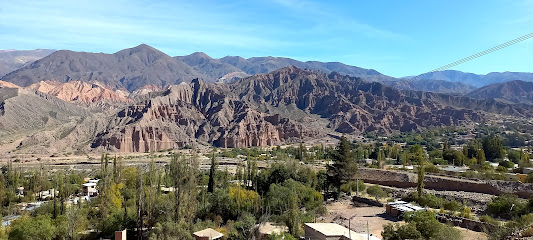
PIEDRAMORA TILCARA
Discover comfort and local charm at PIEDRAMORA TILCARA, your gateway to the stunning landscapes of Jujuy Province in Argentina.

Casatilcara Cabañas
Experience a serene retreat at Casatilcara Cabañas in Tilcara, where stunning views and rich local culture await you in the heart of Jujuy Province.

Unmissable attractions to see
Plaza Cnel. Manuel Álvarez Prado
Discover the cultural heart of Tilcara at Plaza Cnel. Manuel Álvarez Prado, an enchanting park filled with local art, vibrant flora, and community spirit.

Camino a la Garganta del Diablo
Discover the stunning beauty of Camino a la Garganta del Diablo in Tilcara, Jujuy, where nature's wonders await every traveler.

Plaza Sargento Antonino Peloc
Explore the vibrant Plaza Sargento Antonino Peloc in Tilcara, a cultural gem surrounded by stunning Andean landscapes, perfect for relaxation and local experiences.

Altura Botanical Garden
Explore the lush landscapes and unique plant species at Altura Botanical Garden, a serene retreat in Tilcara, Jujuy Province, Argentina.
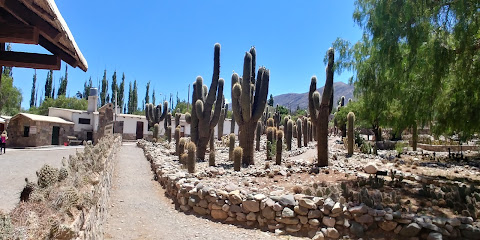
Cuevas Del Wayra Y Aguirre
Explore the breathtaking Cuevas Del Wayra Y Aguirre in Tilcara, Jujuy Province—an unforgettable hiking experience amidst stunning Andean landscapes.

Cerro de la Cruz
Discover the breathtaking vistas and cultural heritage of Cerro de la Cruz in Tilcara, a must-see attraction in the stunning Jujuy Province.

Museum of Painting José Terry
Discover the artistic legacy of Argentina at the Museum of Painting José Terry, where culture and creativity intertwine in the heart of Jujuy.

Museo Arqueológico Eduardo Casanova
Uncover the rich archaeological heritage of Tilcara at Museo Arqueológico Eduardo Casanova, a must-visit for history enthusiasts.

Ernesto Soto Avendaño Museum
Discover the essence of Andean culture at Ernesto Soto Avendaño Museum in Tilcara – a treasure trove of history and heritage awaits.

Plazoleta Antenor Sajama
Explore Plazoleta Antenor Sajama, a tranquil park in Tilcara, Jujuy, where nature and culture converge amidst stunning Andean landscapes.
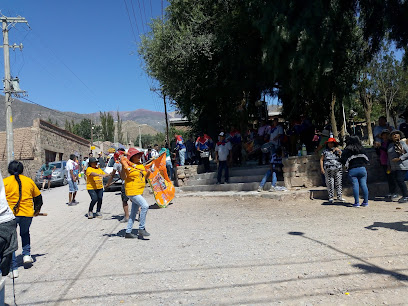
UTAMA taller de ceramica y pintura de Haro Galli
Explore the vibrant artistry and cultural heritage at UTAMA Taller de Cerámica y Pintura in Tilcara, a must-visit destination for art enthusiasts in Jujuy.

Cueva y Laberinto de Huichaira
Explore the stunning Cueva y Laberinto de Huichaira in Tilcara, Jujuy—an enchanting hiking destination rich in natural beauty and cultural history.

Castillos de Huichaira
Discover the stunning Castillos de Huichaira in Tilcara, a unique hiking area with breathtaking rock formations and picturesque Andean landscapes.

Museo Irureta
Explore the rich cultural heritage of Jujuy at Museo Irureta, a captivating museum showcasing local history and art.

Cartel de TILCARA
Experience the vibrant culture and stunning landscapes at Cartel de TILCARA, a must-visit attraction in the heart of Tilcara, Argentina.

Essential places to dine
YPF TILCARA TAMPU
Discover YPF Tilcara Tampo: Your essential stop for fuel, fantastic espresso, and authentic Argentine cuisine in stunning Jujuy Province.

Los Puestos Restaurante
Experience authentic Argentine flavors at Los Puestos Restaurante in Tilcara - where every meal is a celebration of local cuisine.

Bienmesabe
Experience authentic Argentine cuisine at Bienmesabe in Tilcara—where local flavors meet warm hospitality in an unforgettable dining atmosphere.

La Picadita
Experience authentic Argentine cuisine at La Picadita in Tilcara - where every meal tells a story.

Restaurant Sirviñacu
Experience authentic Argentine grilling at Restaurant Sirviñacu in Tilcara - where flavor meets tradition amidst stunning landscapes.

A La Payla Restaurant
Discover authentic Argentine flavors at A La Payla Restaurant in Tilcara - where tradition meets culinary excellence.

El Puente Cafe Resto Bar
Discover El Puente Cafe Resto Bar in Tilcara for an unforgettable dining experience filled with authentic Argentine flavors and stunning mountain views.

Khuska
Experience authentic Argentinian cuisine at Khuska in Tilcara - a culinary haven blending tradition with modern taste.

EL NUEVO PROGRESO
Experience authentic Argentine cuisine at El Nuevo Progreso in Tilcara—where local flavors meet vibrant culture.

Senador Tilcara
Experience authentic Argentine cuisine in a vibrant setting at Senador Tilcara – where every dish is a celebration of local flavors.

Restaurant El Patio
Experience authentic Argentine cuisine at Restaurant El Patio in Tilcara, where local flavors meet a warm and inviting atmosphere.

Kusikanky
Discover authentic Argentine flavors at Kusikanky in Tilcara – where tradition meets culinary excellence amidst stunning Andean scenery.

Chicha Libre Resto Bar
Discover the vibrant flavors of Argentina at Chicha Libre Resto Bar in Tilcara – a culinary treasure blending tradition with innovation.

Nazareno resto bar
Experience authentic Argentine flavors at Nazareno Resto Bar in Tilcara – where delicious food meets breathtaking mountain views.
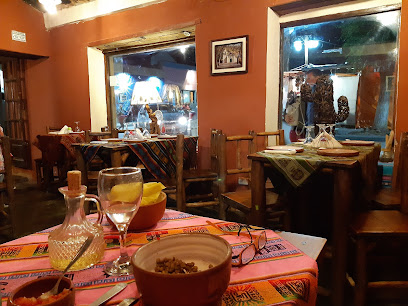
EL MOLLE RESTO BAR
Experience authentic Argentine flavors at El Molle Resto Bar in Tilcara - a must-visit gastropub with a vibrant atmosphere.

Markets, malls and hidden boutiques
Mercado municipal de Tilcara
Discover the authentic flavors and vibrant culture at Mercado Municipal de Tilcara, a must-visit shopping destination in the heart of Jujuy Province.

Viva Tilcara!
Explore local fashion and artisan crafts at Viva Tilcara! in the heart of Tilcara, Jujuy - a cultural treasure for all travelers.

UNCU
Discover the vibrant art scene at UNCU, a unique store and gallery in Tilcara, celebrating local artisans and the rich culture of Jujuy.

Instituto de desarrollo indigena Tilcara
Immerse yourself in the vibrant indigenous culture of Tilcara at the Instituto de Desarrollo Indígena, where tradition meets creativity.

Puisca
Explore Puisca in Tilcara, where modern fashion meets traditional Argentine culture in a stylish clothing store.

Minimercadito Niña Chay
Discover the essence of Jujuy at Minimercadito Niña Chay, a charming grocery store in Tilcara offering local flavors and fresh produce.

Arte Nativo
Discover authentic handicrafts and unique jewelry at Arte Nativo, the heart of Tilcara's artisan scene.

KUNAN
Explore KUNAN in Tilcara for authentic clothing that reflects the rich cultural heritage of Jujuy Province, Argentina.

Alma Nómade
Experience the fusion of art and culture at Alma Nómade, Tilcara's premier destination for tattoos, piercings, and barber services.

La Jabonera Tilcara
Explore the essence of Tilcara at La Jabonera, where local crafts and Argentine traditions come alive through unique artisanal products.

MONTAÑAnort
Explore the vibrant clothing offerings at MONTAÑAnort, where local culture meets contemporary fashion in the heart of Tilcara.

Hilandería Warmi - Tilcara
Uncover the vibrant essence of Tilcara through unique, handcrafted fashion accessories at Hilandería Warmi, a cultural gem in Jujuy.

Arreglos Tilcara
Explore Arreglos Tilcara for quality used appliances and reliable computer services in the heart of Tilcara, Jujuy Province.

Pañalera Baby Shower
Explore Pañalera Baby Shower in Tilcara for quality baby clothing and accessories that reflect local charm and craftsmanship.

Sarabande
Discover the vibrant flavors of Tilcara at Sarabande, a charming kiosk offering local delicacies in the heart of Jujuy Province.

Essential bars & hidden hideouts
Peña de Chuspita
Experience the flavors of Jujuy at Peña de Chuspita, where every meal is accompanied by enchanting live piano music.

Restaurant Sirviñacu
Experience the authentic taste of Argentine grilled cuisine at Restaurant Sirviñacu in the heart of Tilcara, Jujuy Province.

El Puente Cafe Resto Bar
Experience the heart of Argentine cuisine at El Puente Cafe Resto Bar in Tilcara, where local flavors meet vibrant culture in a cozy setting.

Chicha Libre Resto Bar
Experience the vibrant flavors of Tilcara at Chicha Libre Resto Bar, a culinary gem offering local dishes and creative cocktails in a lively atmosphere.

EL MOLLE RESTO BAR
Experience the rich flavors of Argentina at El Molle Resto Bar in Tilcara, where local ingredients meet culinary creativity.

La Rockola
Experience the vibrant culture and delicious cuisine of La Rockola in the heart of Tilcara, Jujuy Province, Argentina.

Killa Resto Bar
Discover the authentic tastes of Argentina at Killa Resto Bar in Tilcara, where every meal is a celebration of local flavors and culture.

El Cafecito de Tukuta Antro de Músicos
Experience the vibrant ambiance of El Cafecito de Tukuta, a bar and café in Tilcara, where music and local flavors come alive.

La Damajuana Restobar
Experience the essence of Argentine cuisine at La Damajuana Restobar, a charming gastropub in the heart of Tilcara, Jujuy.

Terrazas Respiro
Discover the serene beauty of Tilcara at Terrazas Respiro, where local drinks meet breathtaking mountain views for an unforgettable experience.

Viejo Olivo, Bar de Vinos y Tapas
Experience the perfect blend of local wines and tapas at Viejo Olivo, Tilcara's premier wine bar and culinary gem in the heart of Jujuy Province.

Lucifer lounge Bar
Discover the lively atmosphere of Lucifer Lounge Bar in Tilcara, where creative cocktails and stunning views create the ultimate nightlife experience.

YOLO Tilcara
Discover the vibrant nightlife and local flavors at YOLO Tilcara, the ultimate bar experience in the heart of Jujuy Province.

Tierra Andina Bar
Experience the rich flavors of Argentina at Tierra Andina Bar, a grill bar in Tilcara offering authentic dishes and warm hospitality in a stunning Andean setting.
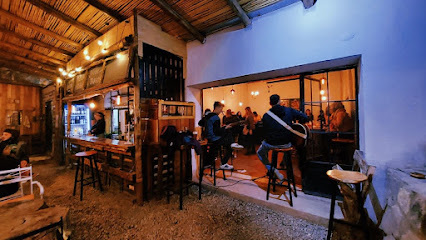
Tilca Bar Cultural Cafe
Discover Tilca Bar Cultural Cafe, a vibrant destination in Tilcara, Jujuy, blending local culture, artisanal drinks, and a welcoming atmosphere.

Local Phrases about Tilcara
-
- HelloHola
[oh-lah] - GoodbyeAdiós
[ah-dee-ohs] - YesSí
[see] - NoNo
[noh] - Please/You're welcomePor favor/De nada
[por fah-vor/deh nah-dah] - Thank youGracias
[grah-see-ahs] - Excuse me/SorryPerdón
[pair-dohn] - How are you?¿Cómo estás?
[koh-moh ehs-tahs] - Fine. And you?Bien. ¿Y tú?
[bee-ehn. ee too] - Do you speak English?¿Hablas inglés?
[ah-blahs een-glehs] - I don't understandNo entiendo
[noh ehn-tee-ehn-doh]
- HelloHola
-
- I'd like to see the menu, pleaseQuisiera ver el menú, por favor
[kee-see-eh-rah behr ehl meh-noo, poor fah-vor] - I don't eat meatNo como carne
[noh koh-moh kahr-neh] - Cheers!¡Salud!
[sah-lood] - I would like to pay, pleaseMe gustaría pagar, por favor
[meh goos-tah-ree-ah pah-gahr, poor fah-vor]
- I'd like to see the menu, pleaseQuisiera ver el menú, por favor
-
- Help!¡Ayuda!
[ah-yoo-dah] - Go away!¡Vete!
[veh-teh] - Call the Police!¡Llama a la policía!
[yah-mah ah lah poh-lee-see-ah] - Call a doctor!¡Llama a un médico!
[yah-mah ah oon meh-dee-koh] - I'm lostEstoy perdido
[ehs-toy pair-dee-doh] - I'm illEstoy enfermo
[ehs-toy ehn-fehr-moh]
- Help!¡Ayuda!
-
- I'd like to buy...Quisiera comprar...
[kee-see-eh-rah kohm-prahr...] - I'm just lookingSolo estoy mirando
[soh-loh ehs-toy mee-rahn-doh] - How much is it?¿Cuánto cuesta?
[kwan-toh kwehs-tah] - That's too expensiveEso es demasiado caro
[eh-soh ehs deh-mah-see-ah-doh kah-roh] - Can you lower the price?¿Puedes bajar el precio?
[pweh-dehs bah-hahr ehl pree-thio]
- I'd like to buy...Quisiera comprar...
-
- What time is it?¿Qué hora es?
[keh oh-rah ehs] - It's one o'clockEs la una
[ehs lah oo-nah] - Half past (10)Media (diez)
[meh-dee-ah (dee-ehs)] - MorningMañana
[mah-nyah-nah] - AfternoonTarde
[tahr-deh] - EveningNoche
[noh-cheh] - YesterdayAyer
[ah-yehr] - TodayHoy
[oy] - TomorrowMañana
[mah-nyah-nah] - 1Uno
[oo-noh] - 2Dos
[dohs] - 3Tres
[trehs] - 4Cuatro
[kwah-troh] - 5Cinco
[seen-koh] - 6Seis
[say-ees] - 7Siete
[syeh-teh] - 8Ocho
[oh-choh] - 9Nueve
[nweh-veh] - 10Diez
[dee-ehs]
- What time is it?¿Qué hora es?
-
- Where's a/the...?¿Dónde está...?
[dohn-deh ehs-tah] - What's the address?¿Cuál es la dirección?
[kwal ehs lah dee-rehk-syohn] - Can you show me (on the map)?¿Puedes mostrarme (en el mapa)?
[pweh-dehs mohs-trar-meh (ehn ehl mah-pah)] - When's the next (bus)?¿Cuándo es el próximo (autobús)?
[kwan-doh ehs ehl proh-ksee-moh (ow-toh-boos)] - A ticket (to ....)Un boleto (a ....)
[oon boh-leh-toh (ah)]
- Where's a/the...?¿Dónde está...?
History of Tilcara
-
Tilcara's history is deeply rooted in the pre-Columbian era, predominantly inhabited by the Omaguaca people. These indigenous inhabitants were skilled agriculturalists and traders, strategically establishing their settlements along the fertile Quebrada de Humahuaca. The Omaguacas constructed complex terracing systems and utilized advanced irrigation techniques, allowing them to thrive in the arid region. Their social and political structures were well-organized, and they engaged in extensive trade networks that connected them with other Andean cultures.
-
One of Tilcara's most iconic historical sites is the Pucará de Tilcara, a pre-Inca fortress that dates back to around the 12th century. The Pucará was a strategic military and administrative center, offering panoramic views of the surrounding valley, making it an ideal location for defense. Excavations have revealed stone structures, including residential areas, terraces, and ceremonial spaces. The site provides invaluable insights into the Omaguaca culture and their interactions with other pre-Columbian civilizations.
-
In the late 15th century, the Inca Empire expanded into the region, incorporating Tilcara and the Quebrada de Humahuaca into their vast territory. The Inca influence introduced new agricultural practices, architectural styles, and administrative systems. Tilcara became an important part of the Inca road network, facilitating communication and trade throughout the empire. The remnants of Inca influence can still be seen in the region's archaeological sites and cultural practices.
-
The Spanish arrived in the region in the 16th century, bringing significant changes to Tilcara and its surroundings. The Spanish imposed their colonial rule, establishing new settlements and converting the indigenous population to Christianity. The construction of churches and colonial buildings began, blending European architectural styles with local traditions. Despite the Spanish influence, many indigenous customs and traditions persisted, creating a unique cultural fusion.
-
During the Argentine War of Independence in the early 19th century, Tilcara witnessed significant military action. The Battle of Tilcara, fought on April 27, 1817, was a crucial engagement between the Spanish royalist forces and the Argentine patriots. The victory of the patriots in this battle played a vital role in securing the independence of the region. This historical event is commemorated annually, highlighting Tilcara's contribution to Argentina's fight for independence.
-
Today, Tilcara is a vibrant town that seamlessly blends its rich historical heritage with modern life. The town's streets are lined with adobe houses, colorful markets, and artisan shops. Traditional festivals, such as the Carnival of Tilcara, showcase the region's cultural diversity and indigenous roots. The local cuisine, music, and dance reflect a fusion of indigenous, Spanish, and contemporary influences. Tilcara's history and culture continue to attract visitors from around the world, making it a must-visit destination for history enthusiasts and travelers alike.
Tilcara Essentials
-
Tilcara is located in the Jujuy Province of northern Argentina. The nearest major airport is Gobernador Horacio Guzmán International Airport (JUJ) in San Salvador de Jujuy, approximately 120 kilometers away. From the airport, you can take a bus or a taxi to Tilcara. The bus journey typically takes around 2 to 3 hours, with several companies offering regular services. Alternatively, you can rent a car for a more flexible travel experience.
-
Tilcara is a small town, and many of its attractions are within walking distance. Local buses and taxis are available for longer trips or to visit nearby villages. Renting a car is a convenient option for exploring the surrounding Quebrada de Humahuaca region at your own pace. Bicycles can also be rented for a more eco-friendly way to navigate the area.
-
The official currency in Argentina is the Argentine Peso (ARS). Credit cards are accepted in most hotels, restaurants, and larger shops, but it is advisable to carry cash, especially for smaller establishments and markets. ATMs are available in Tilcara, but it is wise to have enough cash on hand for smaller purchases and in case of technical issues with the machines.
-
Tilcara is generally a safe destination for tourists. However, like any travel destination, it is advisable to take standard precautions. Avoid walking alone at night in unfamiliar areas and keep an eye on your belongings in crowded places. There are no specific high-crime areas targeting tourists, but it is always best to stay vigilant and aware of your surroundings.
-
In case of emergency, dial 911 for immediate assistance. Tilcara has a local police station and medical facilities available. It is recommended to have travel insurance that covers medical emergencies. For minor health issues, there are pharmacies in town where you can purchase over-the-counter medications.
-
Fashion: Do dress comfortably and in layers, as temperatures can vary widely throughout the day. Avoid wearing overly flashy or expensive jewelry. Religion: Do respect local customs and traditions. When visiting religious sites, dress modestly and avoid disruptive behavior. Public Transport: Do be respectful and patient when using local buses. Don’t eat or drink on public transport. Greetings: Do greet people with a friendly 'Hola' or 'Buen día'. A handshake is common when meeting someone for the first time. Eating & Drinking: Do try local delicacies like empanadas and tamales. Don’t refuse food or drink offerings, as it may be considered impolite.
-
To experience Tilcara like a local, visit the local markets where you can buy fresh produce and traditional crafts. Engage with locals, as they are often friendly and willing to share stories about the town's history and culture. Don’t miss visiting the Pucará de Tilcara, a pre-Inca fortress offering stunning views of the surrounding area. For a unique experience, attend one of the traditional festivals such as the Carnival of Tilcara, which showcases vibrant local music and dances.
Trending Landmarks in Tilcara
-
Pucará de Tilcara
-
Plaza Cnel. Manuel Álvarez Prado
-
Camino a la Garganta del Diablo
-
Hostel Waira (El vasco)
-
Hotel El Reposo Del Diablo
-
El Farolito Hostel Tilcara
-
Altura Botanical Garden
-
Casa Los Molles Hostel Tilcara
-
Cuevas Del Wayra Y Aguirre
-
Dirección de Turismo Tilcara
-
Killa Resto Bar
-
Caravana de Llamas
-
Cerro de la Cruz
-
PIEDRAMORA TILCARA
-
Casatilcara Cabañas
Nearby Cities to Tilcara
-
Things To Do in Tarija
-
Things To Do in San Pedro de Atacama
-
Things To Do in San Miguel de Tucumán
-
Things To Do in Uyuni
-
Things To Do in Potosi
-
Things To Do in Sucre
-
Things To Do in Antofagasta
-
Things To Do in Iquique
-
Things To Do in Santa Cruz de la Sierra
-
Things To Do in Cochabamba
-
Things To Do in Arica
-
Things To Do in Tacna
-
Things To Do in Asuncion
-
Things To Do in Aregua
-
Things To Do in La Paz









